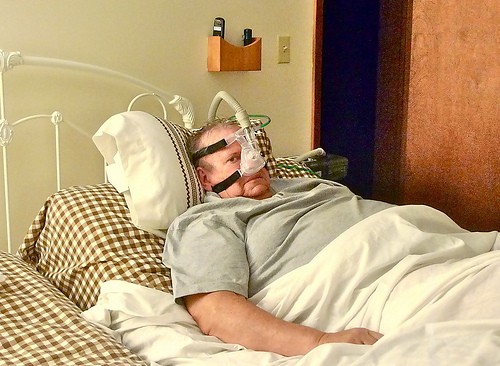
A common non-invasive procedure used to treat sleep apnea at home can make patients look smarter, a new study says.
A team of University of Michigan researchers found that continuous positive airway pressure (CPAP) therapy brought remarkable results for people struggling with obstructive sleep apnea, a disorder that causes abnormal stoppage of breathing while sleeping, and made them more attractive, youthful and alert than earlier.
Continuous positive airway pressure (CPAP) is a machine that delivers air at a predetermined pressure through a mask placed over the nose.
Nearly 45 percent of the world's population is affected with different sleep-related problems like insomnia, restless legs syndrome (RLS), sleep deprivation and sleep-related respiratory disturbances such as obstructive sleep apnea (OSA). Previous studies have shown that lack of getting goodnight's sleep can make people look unattractive, sad and unhealthy. Apart from that, sleep deprivation increases the risk of severe health problems like hypertension, heart disease, stroke and diabetes, poor alertness, lack of attention, reduced concentration, decreased work, academic productivity and road accidents.
For the study, researchers selected 20 adults with obstructive sleep apnea. Photos of the participants, before and after undergoing continuous airway pressure therapy, were taken. Researchers asked 22 people, including medical professionals to observe and compare the photos.
Observers reported that the images of the patients after the therapy, looked more alert (68 percent), more attractive (67 percent) and youthful (64 percent) than before the treatment. Researchers found that the therapy helped decrease forehead surface volume, redness under eyes and on the cheeks.
Researchers hoped that their findings will help encourage people affected with the sleep disorder to use the continuous positive airway pressure machine regularly.
"This study showed that independent human raters - both medical personnel and members of the community - can perceive improved alertness, attractiveness, and youthfulness in the appearance of sleepy patients with obstructive sleep apnea, after they have been compliant with use of CPAP at home," lead author and principal investigator Ronald D. Chervin, director of the Sleep Disorders Center at the University of Michigan, said in a news release.
"This may help convince patients to use their CPAP machines on a nightly basis," he added.
The study has been published on 15 September in the Journal of Clinical Sleep Medicine.











